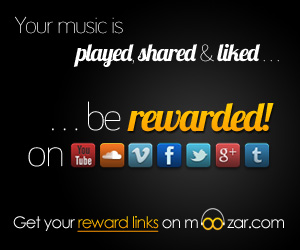On Wednesday, March 11 NARIP presented ‘Music In Games’ – which looked into synch licensing, how to get your music in games, future trends to look out for, the most popular styles in games, and more.
The panelists were:
- Steven Masur, Esq., Senior Partner, MasurLaw
- Paul DeGooyer, Senior VP, Electronic Games / Music Programming, MTV
- Stacey Horricks, Music Supervisor / Producer, MassiveMusic New York
- Ed Razzano, VP of Film, TV & Catalog Marketing, BMG Chrysalis
As digital music is quickly shifting – both in the technology end (like iPads and smartphones) and in the distribution end (like Spotify and Pandora – the gaming industry is seen as being in a paradigm shift. Customer’s expectations aren’t what they were 5 years ago, the world is going mobile, video game consoles abilities are rapidly growing, music law is slowly trying to catch up, web 2.0 is a big part to success of games and music, and the creators and the publishers in the music industry are seeing new opportunities.
When Ed Razzano opened the discussion with “What’s the most interesting trend in games today?”, the panelists were quick to point out that not only will console gaming be something to pay attention to, but so will social gaming. Games like Tap Tap Revenge, Angry Birds, The Rock Band Network, and Farmville changed what a game could do, who it could reach, and how it could be monetized.
When the panel points out that music in games can range from being free (a loss leader) to a $20,000 buyout, to a low front end with backend points depending on a game’s success, the content shifted from trends to numbers.
According to panelist Steven Masur, there will be 20 billion digital sales by 2015 – which is very believable when taking recent trends into account. So how are these broken down?
Well, consider Ed Razzano’s belief that “Games might ship without music.” So you begin to wonder – what if Pandora becomes your soundtrack as you play games, or music in games become strictly in-app purchases, or we see more of the music we listen to on our phones dictating how the game reacts (like Song Summoner).
Consider Masur’s point that CD’s amounted to nearly 13 billion sales at its high point, the digital realm seems to be thriving at an unbelievable pace.
It’s a common misconception to assume digital means mobile. But as Paul DeGooyer was quick to point out, consoles are healthier than ever, and with add ons like Microsoft’s Kinect (which sold 8 million units in 60 days), music in games has a new market, and new ideas.
When the panelists opened up the room for question, many of NARIP’s members of publishers, bands, lawyers, and managers were interested in learning about ‘what were some of the horror stories?’. The worst case, we learned, is when a band doesn’t have full legal rights to the music, and fails to tell the publisher or music supervisor. As a result, projects get pushed back, and ultimately deals get turned down. We learned its best to speak with the Music Supervisor, and go through a ‘middle-man’. The reason for this is more than just about acting as a ‘filter’ for the videogame’s music supervisor. It’s also about copyright, because in the example above, it would be a nightmare to have a song in a game that later was found to not be fully owned, or that had to be pulled because the band didn’t reveal the song’s legal status.
The panel continued to touch upon fantastic content, and answered many questions regarding ‘who do we speak to?’ and ‘what negotiations do we have to work with?”
Walt Ribeiro is a music producer and entrepreneur who runs “For Orchestra”, which takes pop songs and recreates them for the orchestra including artists ranging from Pearl Jam to Lady Gaga. This is Walt’s second SoundCtrl blog post; you can read his first covering his trip to NAMM Expo.


















Comments